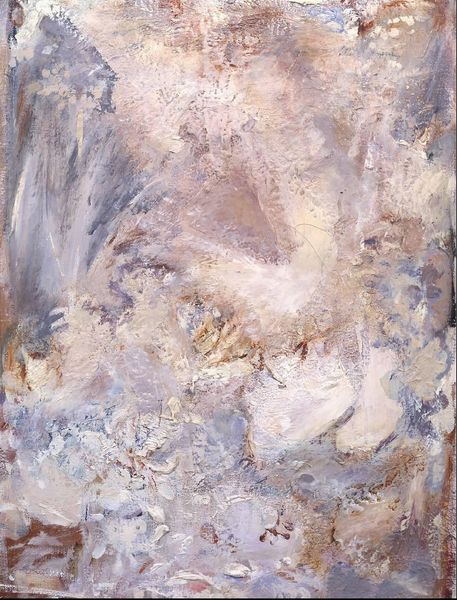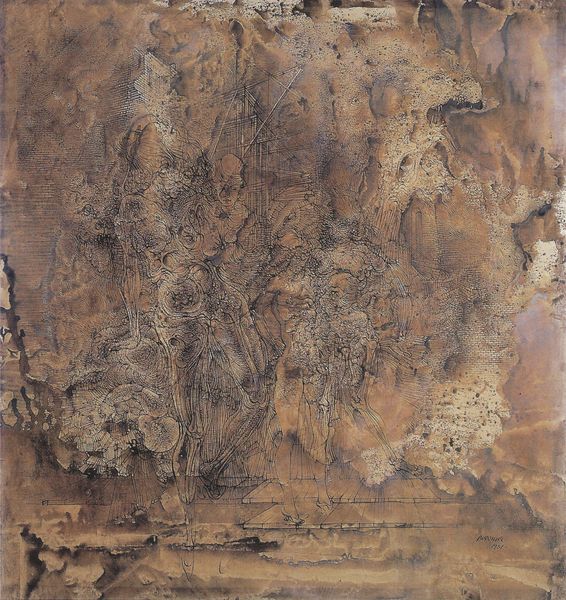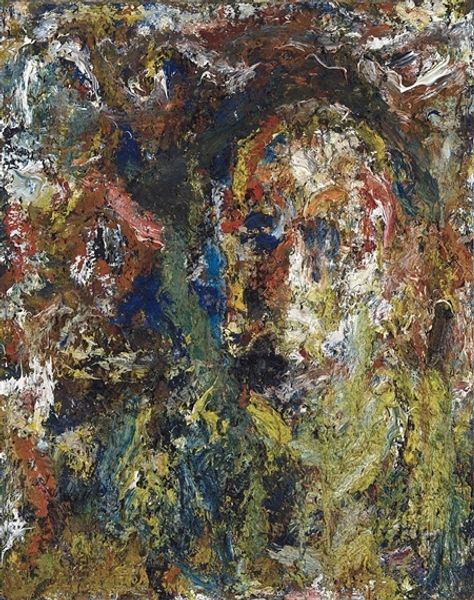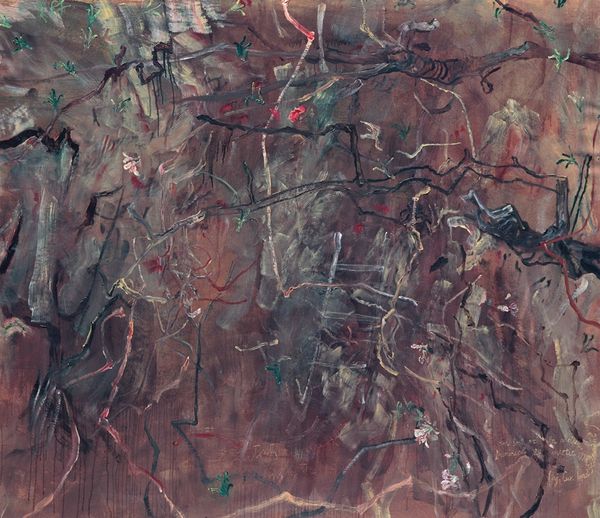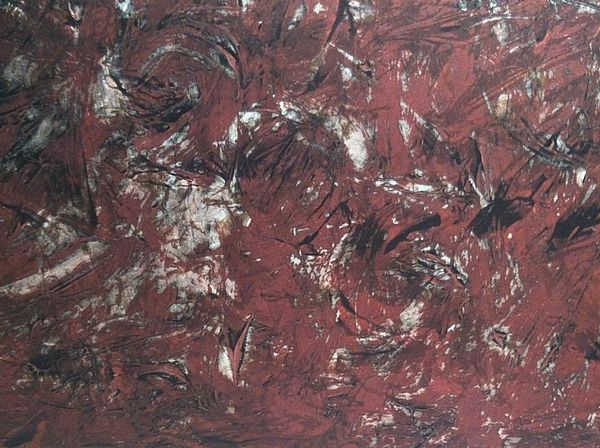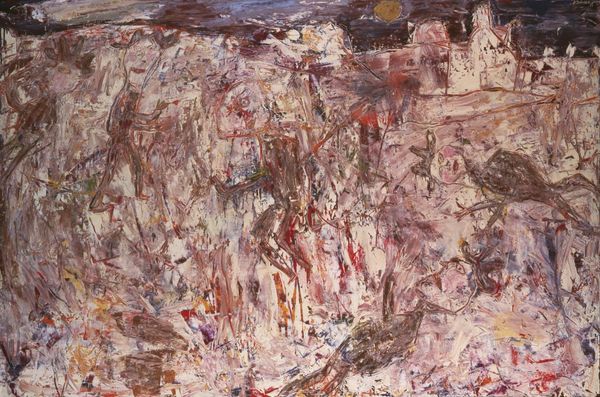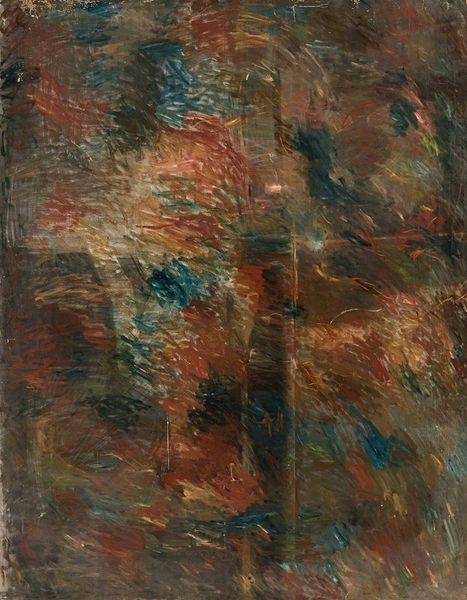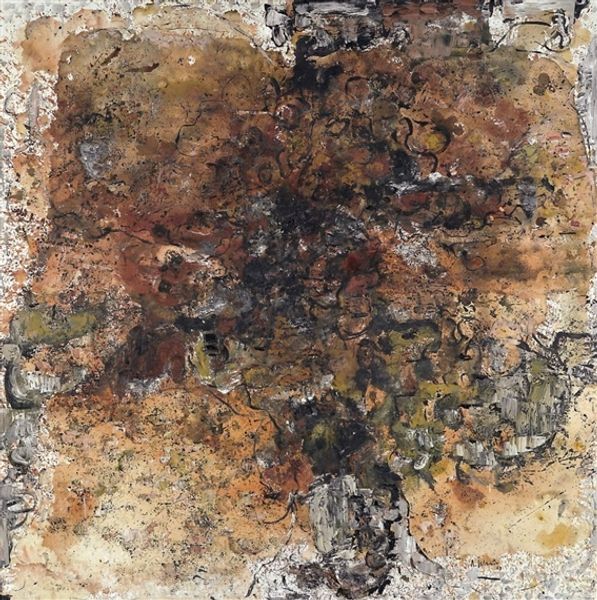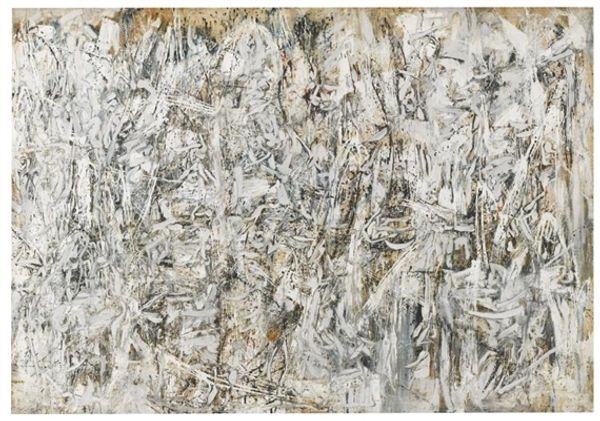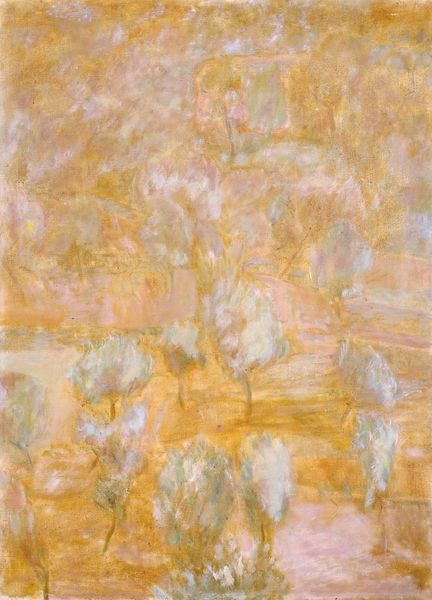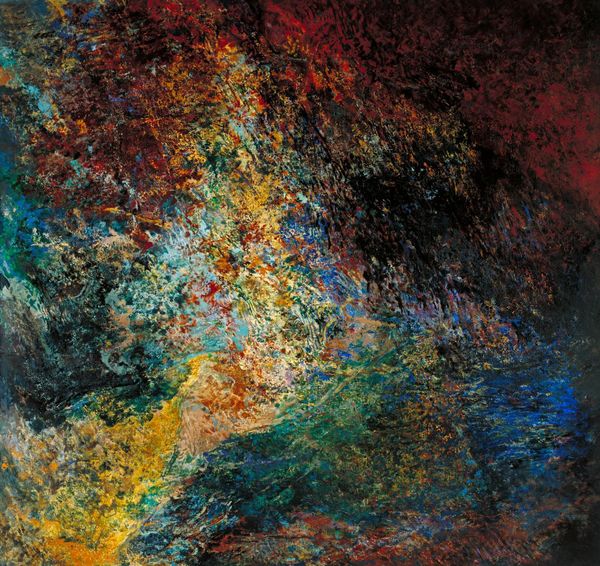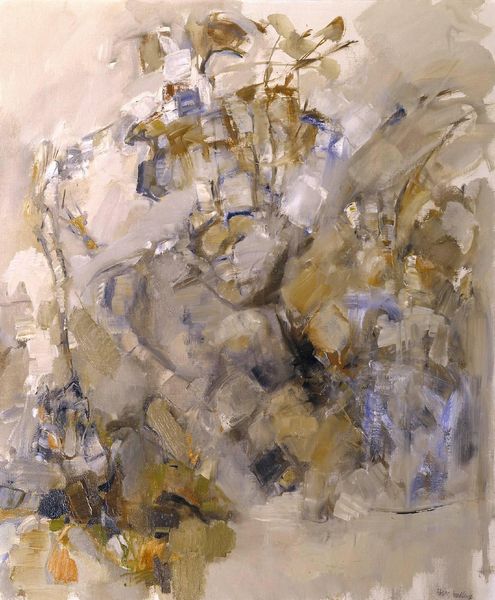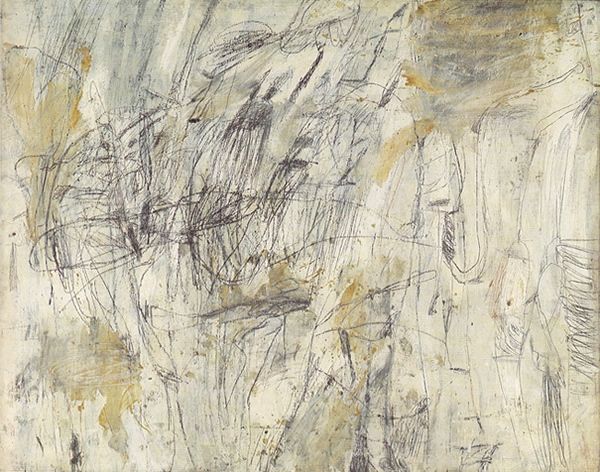
Dimensions: support: 419 x 343 mm
Copyright: © The estate of Rodrigo Moynihan | CC-BY-NC-ND 4.0 DEED, Photo: Tate
Curator: Here we have an untitled painting by Rodrigo Moynihan. Though undated, it is held in the Tate Collections and offers a compelling study of form and texture. Editor: It feels like a landscape viewed through a rain-streaked window. Are we meant to see a literal scene, or is it more about the evocation of earth and sky? Curator: Moynihan’s work often challenged representational conventions, engaging with broader shifts in the socio-political landscape of postwar art. Perhaps this ambiguity is the point. Editor: The palette of browns, grays, and whites does create a sense of somber reflection. It makes me think of ruins and memories, the weight of history rendered in pigment. Curator: Precisely! This connects to discussions about historical memory and the politics of representation. How do we interpret a history that might be obscured or fragmented? Editor: It’s a powerful reminder that images aren't always clear windows, and that even abstraction carries cultural weight. Curator: Indeed, the work speaks volumes.
Comments
Join the conversation
Join millions of artists and users on Artera today and experience the ultimate creative platform.
tate 7 months ago
⋮
This is an example of Objective Abstraction. Moynihan stated in 1934 that his painting identified itself with (and derived from) its means, rather than with a system in which the artist imposes upon the canvas a preconceived idea. 'The evolution is intimately bound up with the canvas and medium'. He later added: 'Our emphasis was on the painterly, on stroke and gesture having value in themselves, on looking with interest at the late Cézanne, late Monet, Turner, Chinese and Japanese calligraphy ... Contrary to Tachism and Expressionism we had a strictly limited view of colour, restraining its use because we thought it had fundamentally figurative allusions'. Gallery label, August 2004
